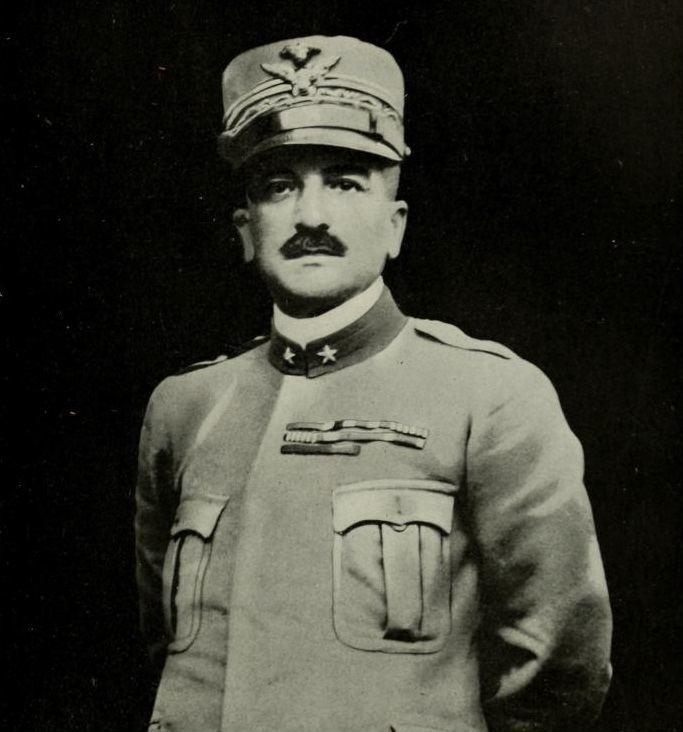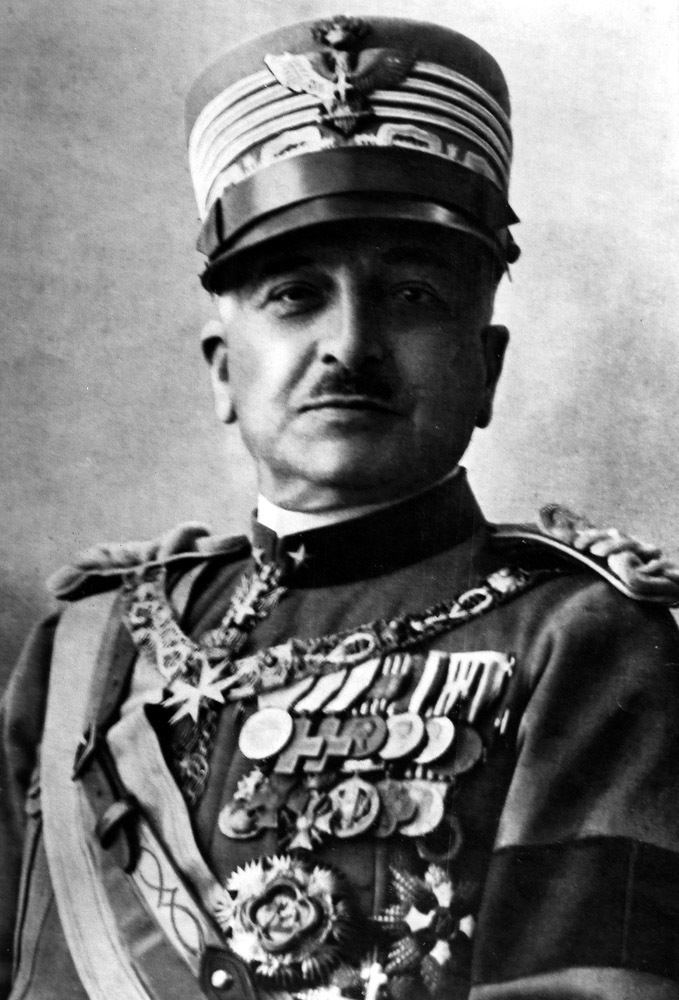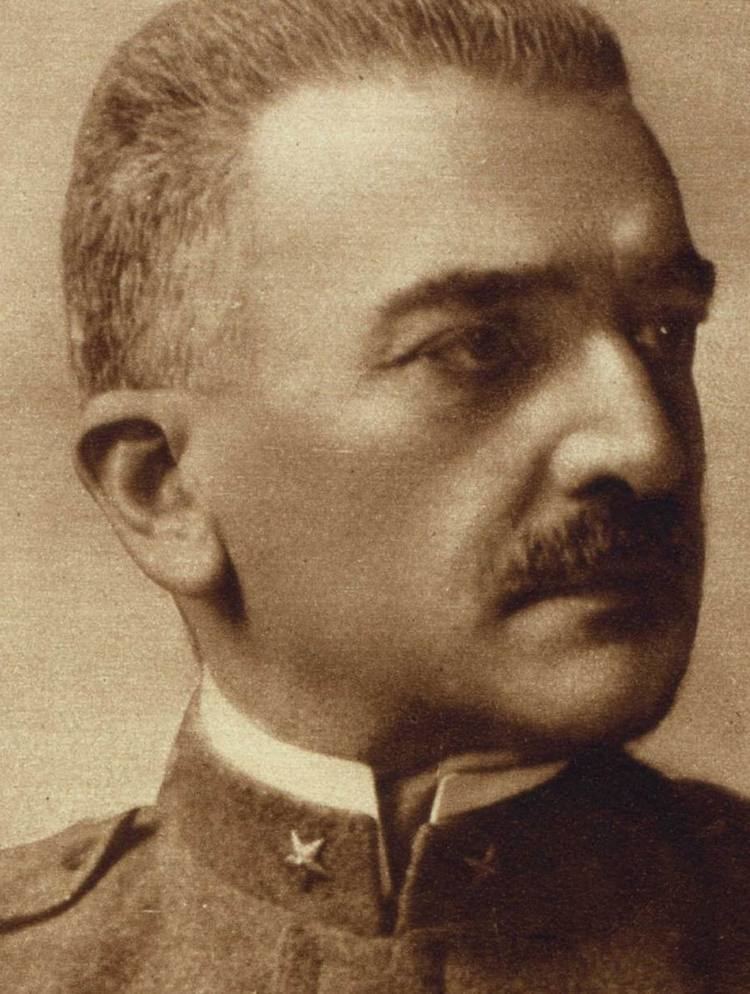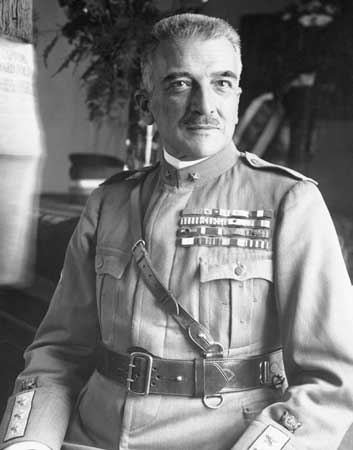Political party Independent Party Independent politician Name Armando Diaz | Preceded by Marcello Soleri Role Military Officer Nationality Italian | |
 | ||
Similar People Luigi Cadorna, Franz Conrad von Hotz, Svetozar Boroevic, Victor Emmanuel III of Italy, Fritz von Below | ||
Italian visitors at the White House in 1921
Armando Diaz, 1st Duke of the Victory, (5 December 1861 – 28 February 1928) was an Italian general and a Marshal of Italy. He is mostly known for his role as Chief of Staff of the Regio Esercito during World War I.
Contents
- Italian visitors at the White House in 1921
- Early life
- Military career
- First World War
- Postwar
- Honours and awards
- References

Early life

Born in Naples in a family of distant Spanish heritage, he was the son of Lodovico, a navy officer and Irene Cecconi, the daughter of a minor noble. Diaz began his military career as a student at the Military Academy of Turin, where he graduate as an artillery officer in 1884.
Military career

He was first assigned to the 10th Field Artillery Regiment. In 1890, with his promotion to captain, he was moved to the 1st Artillery. In 1894, he attended the School of War and ended the courses ranking first in his class. Then, he moved into the Army Staff, and worked in the office of General Alberto Pollio for two years.

In 1899, he received a promotion to infantry major and commanded, for a year and a half, a battallion of the 26th Infantry Regiment.
He reached the rank of lieutenant colonel in 1905, and he served as Chief of Staff in the Florence's Military Division. In 1910, as a colonel, he served in the Italo-Turkish War, commanding the 21st Infantry and, when it lost its commander, the 93rd Infantry. During his Libyan service, he was injured at Zanzur in 1912.
First World War
On the outbreak of World War I, he was assigned to the high command as head of the unit's operations, under General Luigi Cadorna. He was promoted to 2-star general in June 1916, and assumed the command of the 49th division and then the 23rd army corps.
The Battle of Caporetto, in October 1917, was disastrous to the army, and on 8 November 1917, he was called to succeed Cadorna as chief of general staff. Having recovered what remained of the army, he organized the resistance in 1917 on the Monte Grappa massif and along the Piave River, which successfully halted the Austrian offensive. In the summer of 1918, he oversaw the victory in the Battle of the Piave River and, later that year, he led the Italian troops in the Battle of Vittorio Veneto, which ended the war on the Italian front. With his famous Bollettino della Vittoria (Victory Address), he communicated the rout of the Austrian army and the victory of the Italians in the war.
Postwar
On 1 November 1921 Diaz was in Kansas City to attend the groundbreaking ceremony for the Liberty Memorial that was being constructed there. Also present that day were Lieutenant General Baron Jacques of Belgium, Admiral David Beatty of Great Britain, Marshal Ferdinand Foch of France, and General John J. Pershing of the United States. One of the main speakers was Vice President Calvin Coolidge of the United States. In 1935 bas-reliefs of Jacques, Foch, Diaz, and Pershing by sculptor Walker Hancock were added to the memorial.
After the war Armando Diaz was appointed as a senator. In 1921 he was ennobled by King Victor Emmanuel III and given the victory title of 1st Duca della Vittoria ("Duke of Victory"). Benito Mussolini named him Minister of War, and he was promoted to Field Marshal. Upon retirement, in 1924, he was given the honor of Marshal of Italy (Maresciallo d'Italia). Diaz died in Rome in 1928; he was buried in the church of Santa Maria degli Angeli e dei Martiri, next to Admiral Paolo Thaon di Revel.
